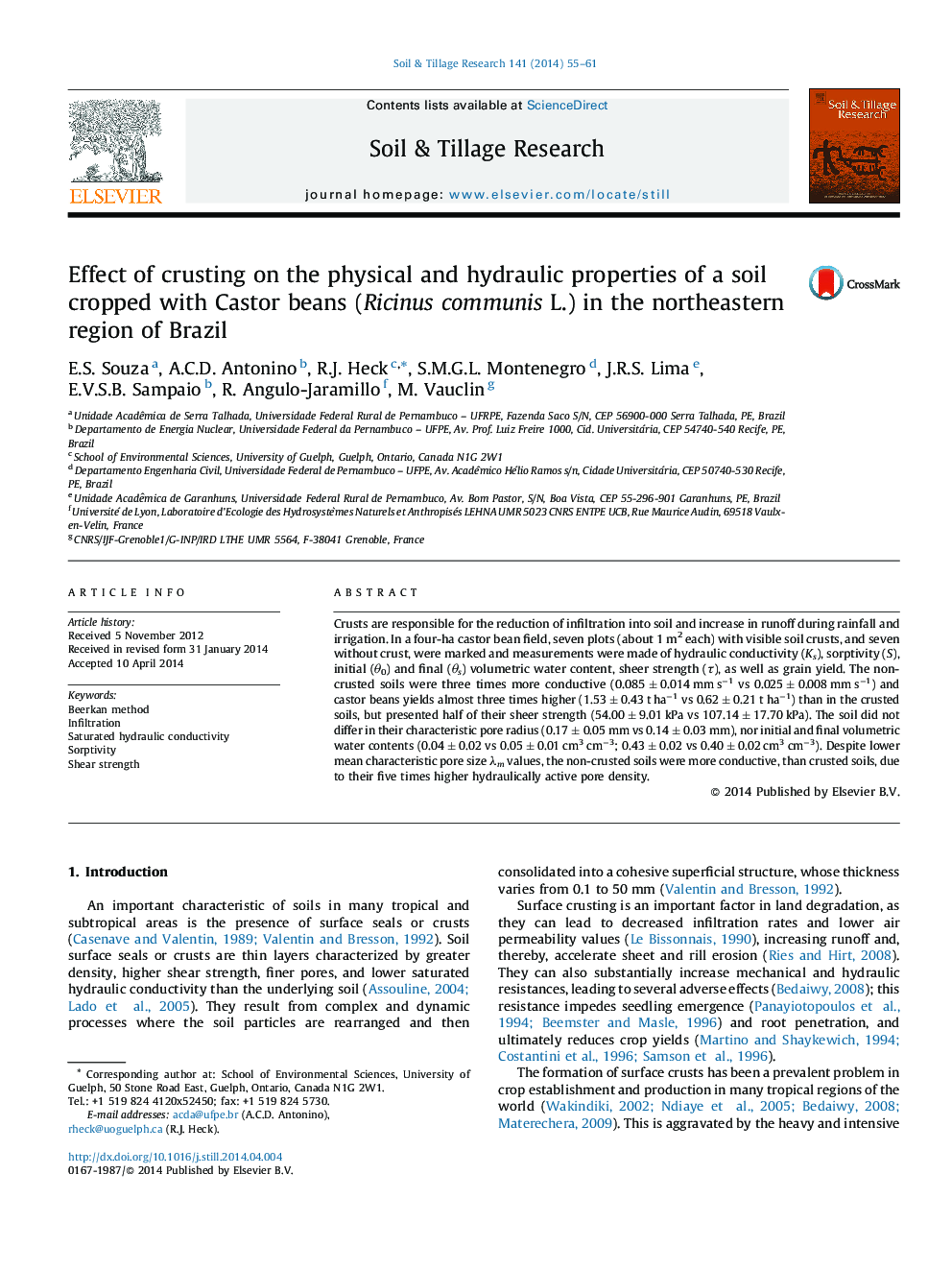| Article ID | Journal | Published Year | Pages | File Type |
|---|---|---|---|---|
| 305621 | Soil and Tillage Research | 2014 | 7 Pages |
•We evaluated the impact of crusts on mechanical and hydraulic behavior in Oxisols.•The hydraulic conductivity was more than three times greater in non-crusted soils.•Castor bean yields were less than one third in crusted, than non-crusted, soils.
Crusts are responsible for the reduction of infiltration into soil and increase in runoff during rainfall and irrigation. In a four-ha castor bean field, seven plots (about 1 m2 each) with visible soil crusts, and seven without crust, were marked and measurements were made of hydraulic conductivity (Ks), sorptivity (S), initial (θ0) and final (θs) volumetric water content, sheer strength (τ), as well as grain yield. The non-crusted soils were three times more conductive (0.085 ± 0.014 mm s−1 vs 0.025 ± 0.008 mm s−1) and castor beans yields almost three times higher (1.53 ± 0.43 t ha−1 vs 0.62 ± 0.21 t ha−1) than in the crusted soils, but presented half of their sheer strength (54.00 ± 9.01 kPa vs 107.14 ± 17.70 kPa). The soil did not differ in their characteristic pore radius (0.17 ± 0.05 mm vs 0.14 ± 0.03 mm), nor initial and final volumetric water contents (0.04 ± 0.02 vs 0.05 ± 0.01 cm3 cm−3; 0.43 ± 0.02 vs 0.40 ± 0.02 cm3 cm−3). Despite lower mean characteristic pore size λm values, the non-crusted soils were more conductive, than crusted soils, due to their five times higher hydraulically active pore density.
